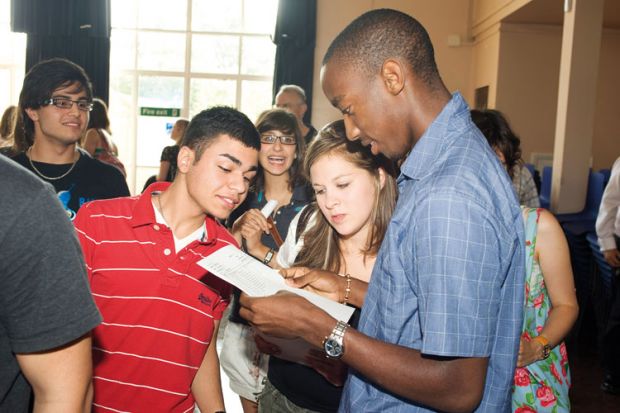Ucas recently released data that draw attention to the difference in offer rates between white and black and minority ethnic (BME) applicants to university. The release of these data is welcome and provides an opportunity for the education sector to have conversations about the experience of BME students.
The Ucas analysis suggests no systemic bias against ethnic minorities in higher education admissions, and most of the differences in offer rates were accounted for by the fact that – with the same predicted grades profiles – white applicants were simply more likely to apply for courses and universities where the offer rate is higher.
However, the Ucas analysis uses predicted grades to calculate expected offer rates. Predicted grades in themselves are a contested area, with research from the Department for Business, Innovation and Skills highlighting that “the least accurate predictions were for Black applicants where only 39.13% of grades were predicted accurately”.
As a result, the offer rate for BME students might be close to what would be expected, but not as close as it is for white students. And, even though the difference in offer rates between BME and white candidates is small, it is compounded over time. Systemic bias against BME people has, I believe, led to long-term and historic imbalances.
Let’s take an example from a different context: the promotion of women within US companies. Research has indicated in the past that women receive less favourable evaluation of their work than men, with a bias in the order of 1 to 5 per cent. A computer simulation that considers real-world context suggests that this leads to a considerable detrimental effect on the promotion of women.
If you start with a cohort of 500 people, a 5 per cent bias in performance evaluation leads to 29 per cent of highest-level staff being women, and 58 per cent of the lowest level. A 1 per cent bias leads to only slightly better figures of 35 per cent and 53 per cent respectively. So the slightly lower offer rate for BME candidates to university, if we consider this in relation to population size and over time, creates a considerable absence of BME students from our universities.
Applying to university is just one stage on a student’s education journey, and research indicates that there is substantial variation in the outcomes for different ethnic groups at all stages. Chinese and Indian pupils perform better than white British students. Black, Bangladeshi, Pakistani and Traveller and Gypsy children perform less well.
There is a wealth of academic literature and discussion on the reasons for these differential outcomes. It is therefore important to note that, as Vikki Boliver at Durham University has pointed out, the Ucas analysis groups all BME applicants into one category, and this can mask the considerable variation in how different minority ethnic groups fare within the education system.
So what happens to those students who have successfully navigated through the compulsory education system and the university application process? Does their path become smoother once in university?
Unfortunately, data from the Equality Challenge Unit’s forthcoming 2015 statistical report indicates otherwise: there is a considerable gap between the proportions of white British students awarded a 2:1 or higher upon graduation in comparison with British students from minority ethnic background – systemic bias continues to operate. In 2013-14, 60 per cent of UK-domiciled BME first degree undergraduate qualifiers received a 2:1 or higher, compared with 76 per cent of white British qualifiers.
While the Ucas analysis points to only a small difference in offers to BME candidates, the impact on students is far from small if we consider these data in the broader context of the multiple layers of compounded disadvantage experienced by BME students. Changing these patterns requires cooperation at all levels and stages of the education system.
Gary Loke is head of policy at the Equality Challenge Unit.
Register to continue
Why register?
- Registration is free and only takes a moment
- Once registered, you can read 3 articles a month
- Sign up for our newsletter
Subscribe
Or subscribe for unlimited access to:
- Unlimited access to news, views, insights & reviews
- Digital editions
- Digital access to THE’s university and college rankings analysis
Already registered or a current subscriber? Login





